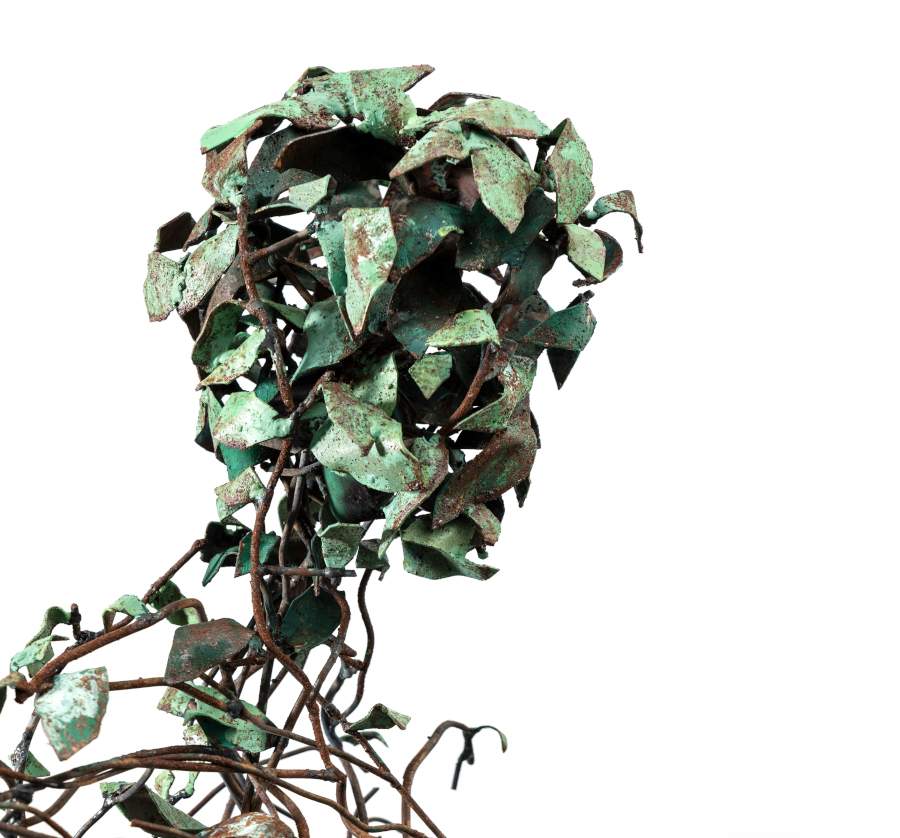Francesco Diluca’s solo exhibition, Portraits, curated by Angela Madesani, will be on view in the spaces of the Basilica of San Celso in Milan from January 21 to February 2022. The exhibition is presented as a single large site-specific installation consisting of about thirty life-size anthropomorphic sculptures: creatures between human, animal and plant in which the relationship between man and nature is very evident.
The works, created especially for the exhibition, were designed to place them in dialogue with the environments of the basilica, becoming hieratic presences: sacred are the spaces as sacred is, for the artist, nature, the true protagonist of the exhibition. Dozens of slender organic figures made of welded iron, iron powder, copper oxidation, rust and pure gold, all different from each other and with distinctive features, are scattered along the aisles of the basilica and invite the public to be not only spectators, but an integral part of the exhibition.
The sculptures are linked by a common thread: the relationship with nature, also understood as the passage of time and the seasons. Indeed, all the works represent a moment of metamorphosis, when one phase of life ends to give rise to another. It happens in the works belonging to the series Radicarsi, threadlike sculptures that depict nature’s ability to regenerate itself. The imposing sculpture that opens the exhibition, for example, placed at the beginning of the basilica’s driveway, is a tree-man at the top of which a germination begins: small leaves make up what will be a face.
The second sculpture on the path is placed inside an amphora set into a wall. The amphora is partly broken and the work that is placed inside, as if to imply a possibility of regeneration, is titled Breath and is composed of butterflies made of welded iron and later gilded. The works that make up the Papillon series always mark an end and a new beginning. Or vice versa.
On the same boundary move the sculptures of the Post fata resurgo series: works made of a special metal yarn that can catch fire. When the sculpture burns (an act that will be accomplished in a performance on opening night) the yarn produces a myriad of sparks allowing glimpses of body parts, organs and vein filaments that ignite a continuous chain reaction. The work changes state becoming fragile and dissolving little by little. Again, the artist records a change: the end of a moment that opens a new phase.
Also related to the themes of evolution and continuous regeneration are the works belonging to the Kura Halos series that refer to the imagery and symbolism associated with red coral. Half-human, half-coral creatures, Diluca’s works express that sense of fragility and at the same time strength that is associated with marine ramifications.
The exhibition is complemented by an immersive virtual experience that takes advantage of 360-degree filming technology, making the exhibition accessible even to those who will not be able to attend.
Hours: Tuesday through Sunday from 3 to 7 p.m. Closed Mondays. Free admission.
Image: Francesco Diluca, Radicarsi, detail (2020; welded iron and oxidized copper powder)
 |
| In the Basilica of San Celso in Milan, the anthropomorphic sculptures of Francesco Diluca |
Warning: the translation into English of the original Italian article was created using automatic tools. We undertake to review all articles, but we do not guarantee the total absence of inaccuracies in the translation due to the program. You can find the original by clicking on the ITA button. If you find any mistake,please contact us.